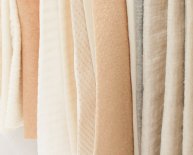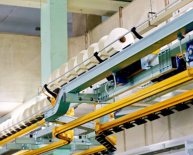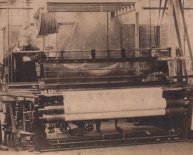
Problems of cotton textile industry
� The pesticides that farmers use to protect textiles as they grow can harm wildlife, contaminate other products and get into the food we eat.
� The chemicals that are used to bleach and colour textiles can damage the environment and peoples health.
� Old clothes that we throw away take up precious space in landfill sites, which is filling up rapidly.
� Most of the textile machineries cause noise, sound and air pollution.
� Over-usage of natural resources like plants, water, etc depletes or disturbs ecological balance.
� The working conditions in the textile and clothing industry are of sub- standard.
� Exploitation of animals often goes hand in hand with intensive farming practices that damage the environment as a whole.
ENVIRONMENTAL EFFECTS OF TEXTILE FIBRES
Natural fibres have their problems, too:
Cotton is the most pesticide intensive crop in the world: these pesticides injure and kill many people every year. It also takes up a large proportion of agricultural land, much of which is needed by local people to grow their own food. Herbicides, and also the chemical defoliants which are sometimes used to aid mechanical cotton harvesting, add to the toll on both the environment and human health. These chemicals typically remain in the fabric after finishing, and are released during the lifetime of the garments. The development of genetically modified cotton adds environmental problems at another level. Growing cotton uses 22.5 percent of all the insecticides used globally? Growing enough cotton for one t-shirt requires 257 gallons of water. On top of that, bleaching and then dyeing the resulting fabric creates toxins that flow into our ecosystem. �
First of all, the cotton must be grown; this entails vast amounts of chemical fertilizers and pesticides that pollute and deplete the soil. Despite mecha�nized harvesting, the cotton industry is still largely dependent on cheap labour. The raw cotton is then dyed, meaning chemicals and heavy metals with harmful effects on the envi�ronment. Finally bands of cotton are assem�bled in factories to be sown into a T-shirt. From wastewater emissions to air pollution and energy consumption, the textile industry weighs heavily on the environment.
Wool pollution: both agricultural and craft workers in the UK suffer from exposure to organophosphate sheep dip problem. Getting from fibre to cloth - bleaching, dyeing, and finishing - uses yet more energy and water, and causes yet more pollution.
Nylon and polyester - made from petrochemicals, these synthetics are also non-biodegradable, and so they are inherently unsustainable on two counts. Nylon manufacture creates nitrous oxide, a greenhouse gas 310 times more potent than carbon dioxide. Making polyester uses large amounts of water for cooling, along with lubricants which can become a source of contamination. Both processes are also very energy-hungry.
Rayon (viscose), another artificial fibre, is made from wood pulp, which on the face of it seems more sustainable. However, old growth forest is often cleared and/or subsistence farmers are displaced to make way for pulpwood plantations. Often the tree planted is eucalyptus, which draws up phenomenal amounts of water, causing problems in sensitive regions. To make rayon, the wood pulp is treated with hazardous chemicals such as caustic soda and sulphuric acid. The use of rayon for clothing is contributing to the rapid depletion of the world's forests. Petroleum-based products are detrimental to the environment on many levels.

















